Former lab members
A list of my former Master students is available here.
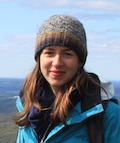 Maëlis Kervellec (PhD 2021-2024) developed statistical models for the analysis of camera trap data with applications in large carnivores population ecology. This was joint work with colleagues from the
French Office of Biodiversity. Maëlis was co-supervised with Cyril Milleret.
Maëlis Kervellec (PhD 2021-2024) developed statistical models for the analysis of camera trap data with applications in large carnivores population ecology. This was joint work with colleagues from the
French Office of Biodiversity. Maëlis was co-supervised with Cyril Milleret.
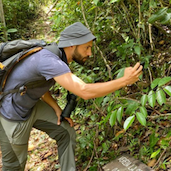 Javi Fernández-López (post-doc 2022-2023) is interested in conservation biology and phylogeography. He is modelling the distribution of mammals in Europe by integrating various sources of data. Check out his website
https://allthiswasfield.blogspot.com.
Javi Fernández-López (post-doc 2022-2023) is interested in conservation biology and phylogeography. He is modelling the distribution of mammals in Europe by integrating various sources of data. Check out his website
https://allthiswasfield.blogspot.com.
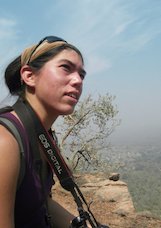 Mónia Nakamura Mercier Real (PhD 2019-2024) is investigating the impacts of anthropogenic factors on large carnivores persistence in human-dominated landscapes. She used wolf in Spain and Portugal as a model species to address how different humanization levels can influence habitat selection and land use, and ultimately affect its demography, status and viability. The thesis was co-supervised with
José Vicente López-Bao and
Pedro Monterroso.
Mónia Nakamura Mercier Real (PhD 2019-2024) is investigating the impacts of anthropogenic factors on large carnivores persistence in human-dominated landscapes. She used wolf in Spain and Portugal as a model species to address how different humanization levels can influence habitat selection and land use, and ultimately affect its demography, status and viability. The thesis was co-supervised with
José Vicente López-Bao and
Pedro Monterroso.
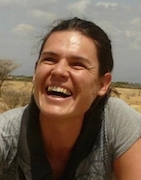 Béatrice Chataigner (EPHE diploma 2020-2022) is working on locally-based monitoring programs in Kenya. Her research project aimed at exploring the performances of current ecological monitoring program of Kenyan conservanciesin addressing their needs in terms of adaptive management at local level as well as ecosystem level. Béatrice works for IUCN in the
Program on African Protected Areas and Conservation. Her work was jointly supervised by
Nicholas Pilfold and
Aurélien Besnard.
Béatrice Chataigner (EPHE diploma 2020-2022) is working on locally-based monitoring programs in Kenya. Her research project aimed at exploring the performances of current ecological monitoring program of Kenyan conservanciesin addressing their needs in terms of adaptive management at local level as well as ecosystem level. Béatrice works for IUCN in the
Program on African Protected Areas and Conservation. Her work was jointly supervised by
Nicholas Pilfold and
Aurélien Besnard.
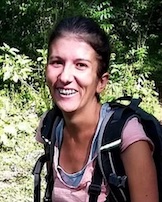 Patrícia Rodrigues (post-doc 2021-2023) is interested in the social-ecological dynamics underpinning environmental problems in Africa. Her project aimed to characterize landscapes within Africa’s Great Green Wall in terms of their social-ecological properties and restoration initiatives. More
here.
Patrícia Rodrigues (post-doc 2021-2023) is interested in the social-ecological dynamics underpinning environmental problems in Africa. Her project aimed to characterize landscapes within Africa’s Great Green Wall in terms of their social-ecological properties and restoration initiatives. More
here.
 Matthew Silk (post-doc 2022-2023) is a behavioural and disease ecologist researching the links between population dynamics and social structure by developing new social network and demographic models. Matt was a MCSA research fellow. He is now a research fellow in Edinburgh.
Matthew Silk (post-doc 2022-2023) is a behavioural and disease ecologist researching the links between population dynamics and social structure by developing new social network and demographic models. Matt was a MCSA research fellow. He is now a research fellow in Edinburgh.
 Louis Barbu (intern 2022) was a second year student of
BTSA GPN. Louis conducted a study on the functionality of ecological corridors through the European otter in the Hérault department.
Louis Barbu (intern 2022) was a second year student of
BTSA GPN. Louis conducted a study on the functionality of ecological corridors through the European otter in the Hérault department.
 Julie Louvrier (post-doc 2022) is an ecologist with strong quantitative skills. She worked on the interactions between large carnivores using occupancy models.
Julie Louvrier (post-doc 2022) is an ecologist with strong quantitative skills. She worked on the interactions between large carnivores using occupancy models.
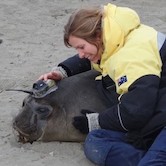 Marine Desprez (post-doc 2022) worked on machine learning methods for classification problems in ecology. This was joint work with Vincent Miele.
Marine Desprez (post-doc 2022) worked on machine learning methods for classification problems in ecology. This was joint work with Vincent Miele.
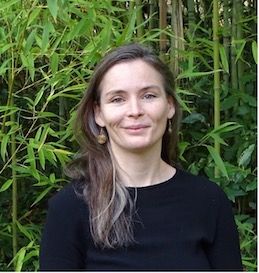 Alix Cosquer (post-doc 2019-2022) is an environmental psychologist. She studied how to favor connections between nature and children using educative marine areas, and worked on children’s relationships with nature in schools.
Alix Cosquer (post-doc 2019-2022) is an environmental psychologist. She studied how to favor connections between nature and children using educative marine areas, and worked on children’s relationships with nature in schools.
 Maud Quéroué (PhD 2018-2021) developed multispecies demographic models to study predator-prey interactions in seabirds and competition/coexistence in passerines. This was joint work with
Christophe Barbraud,
Pierre-Yves Henry and
Frédéric Barraquand. Maud is now a post-doc with Aurélien Besnard.
Maud Quéroué (PhD 2018-2021) developed multispecies demographic models to study predator-prey interactions in seabirds and competition/coexistence in passerines. This was joint work with
Christophe Barbraud,
Pierre-Yves Henry and
Frédéric Barraquand. Maud is now a post-doc with Aurélien Besnard.
 Valentin Lauret (PhD 2018-2021) developed integrated models for monitoring of bottlenose dolphins in the network of marine protected areas in the French Mediterranean Sea. This was joint work with Hélène Labach from the
MIRACETI NGO. Valentin is now a post-doc with Aurélien Besnard.
Valentin Lauret (PhD 2018-2021) developed integrated models for monitoring of bottlenose dolphins in the network of marine protected areas in the French Mediterranean Sea. This was joint work with Hélène Labach from the
MIRACETI NGO. Valentin is now a post-doc with Aurélien Besnard.
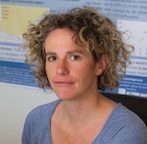 Hélène Labach (PhD 2017-2021) from
GIS3M was working on the conservation of bottlenose dolphins in the North-Western Mediterranean Sea. Her work relied on the data collected through the
GDEGeM project. She continues her work as the head of the
MIRACETI NGO.
Hélène Labach (PhD 2017-2021) from
GIS3M was working on the conservation of bottlenose dolphins in the North-Western Mediterranean Sea. Her work relied on the data collected through the
GDEGeM project. She continues her work as the head of the
MIRACETI NGO.
 Nina Santostasi (PhD 2016-2019) developed capture-recapture and demographic models
for studying hybridization in the wild. As case studies, she considered dolphins in the Gulf of Corinth in Greece (with Giovanni Bearzi and Silvia Bonizzoni from
Dolphin Biology and
Conservation) and wolves in Italy (with
Paolo
Ciucci from University of Rome -
La Sapienza). Nina is now a post-doc with Paolo Ciucci working on estimating population abundance of brown bears.
Nina Santostasi (PhD 2016-2019) developed capture-recapture and demographic models
for studying hybridization in the wild. As case studies, she considered dolphins in the Gulf of Corinth in Greece (with Giovanni Bearzi and Silvia Bonizzoni from
Dolphin Biology and
Conservation) and wolves in Italy (with
Paolo
Ciucci from University of Rome -
La Sapienza). Nina is now a post-doc with Paolo Ciucci working on estimating population abundance of brown bears.
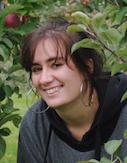 Sarah Bauduin (post-doc 2018-2019) built spatially-explicit agent-based models
to assess the viability of Eurasian lynx in France, and more broadly to study multispecies demography. Sarah is now a
permanent researcher with the French Office of Biodiversity.
Sarah Bauduin (post-doc 2018-2019) built spatially-explicit agent-based models
to assess the viability of Eurasian lynx in France, and more broadly to study multispecies demography. Sarah is now a
permanent researcher with the French Office of Biodiversity.
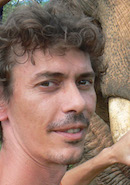 Gilles Maurer (PhD 2015-2018, post-doc 2018-2020) studied the interactions between wild and semi-captive pools of Asian elephants with an interdisciplinary framework (demography, economy, anthropology, population genetics). This was joint work with Baptiste Mulot at
Beauval Nature, Finn Kjellberg and Nicolas Lescureux from CEFE. Gilles is now a permanent researcher at Beauval Nature, hosted at CEFE.
Gilles Maurer (PhD 2015-2018, post-doc 2018-2020) studied the interactions between wild and semi-captive pools of Asian elephants with an interdisciplinary framework (demography, economy, anthropology, population genetics). This was joint work with Baptiste Mulot at
Beauval Nature, Finn Kjellberg and Nicolas Lescureux from CEFE. Gilles is now a permanent researcher at Beauval Nature, hosted at CEFE.
 Lorena Mansilla (PhD 2016-2019) developed capture-recapture and demographic models
for social species with wolves, dolphins and elephant seals as case studies. She used spatially-explicit capture-recapture models, social networks, cluster analyses and integrated population models (her thesis was co-supervised with Roger Pradel).
Lorena Mansilla (PhD 2016-2019) developed capture-recapture and demographic models
for social species with wolves, dolphins and elephant seals as case studies. She used spatially-explicit capture-recapture models, social networks, cluster analyses and integrated population models (her thesis was co-supervised with Roger Pradel).
 Vincenzo Gervasi (post-doc 2017-2019) used an interdisciplinary approach to
understand coexistence patterns and build trans-boundary management tools for coexistence
between large carnivores and human activities in Europe. This was joint work with
John
Linnell from NINA (Norway) and
Luigi Boitani from
University of Rome - La Sapienza. Vincenzo is now a post-doc with ISPRA back in Italy working on the African swine fever epidemics in wild boar.
Vincenzo Gervasi (post-doc 2017-2019) used an interdisciplinary approach to
understand coexistence patterns and build trans-boundary management tools for coexistence
between large carnivores and human activities in Europe. This was joint work with
John
Linnell from NINA (Norway) and
Luigi Boitani from
University of Rome - La Sapienza. Vincenzo is now a post-doc with ISPRA back in Italy working on the African swine fever epidemics in wild boar.
 Julie Louvrier (PhD 2015-2018) evaluated and developed occupancy models for assessing the
distribution of large carnivores (wolf, lynx) in Europe. This was joint work with
Christophe Duchamp, Nolwenn Hoguet-Drouet and Eric Marboutin from
ONCFS.
Julie is now a post-doc at the
Leibniz Institute for Zoo and Wildlife Research.
Julie Louvrier (PhD 2015-2018) evaluated and developed occupancy models for assessing the
distribution of large carnivores (wolf, lynx) in Europe. This was joint work with
Christophe Duchamp, Nolwenn Hoguet-Drouet and Eric Marboutin from
ONCFS.
Julie is now a post-doc at the
Leibniz Institute for Zoo and Wildlife Research.
 Loreleï Guéry (post-doc 2016-2018) studied the dynamics of lynx in
Switzerland using spatially-explicit capture-recapture models. This was joint work with
Fridolin Zimmermann from KORA. Loreleï then did a
post-doc
in the MARBEC lab, working with
Daniel Gaertner from IRD
on the population dynamics of tunas. She is now a
permanent researcher at CIRAD.
Loreleï Guéry (post-doc 2016-2018) studied the dynamics of lynx in
Switzerland using spatially-explicit capture-recapture models. This was joint work with
Fridolin Zimmermann from KORA. Loreleï then did a
post-doc
in the MARBEC lab, working with
Daniel Gaertner from IRD
on the population dynamics of tunas. She is now a
permanent researcher at CIRAD.
 Blaise Piédallu (PhD 2013-2016) developed an integrated approach for managing human-wildlife
conflicts with the Pyrenean brown bear population as a case study (joint work with
Pierre-Yves Quenette from ONCFS). Blaise now works as a biology teacher.
Blaise Piédallu (PhD 2013-2016) developed an integrated approach for managing human-wildlife
conflicts with the Pyrenean brown bear population as a case study (joint work with
Pierre-Yves Quenette from ONCFS). Blaise now works as a biology teacher.
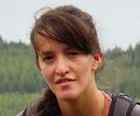 Laetitia Blanc (PhD 2012-2016, ATER 2016) Worked on the conservation of lynx in France using
spatially-explicit individual-based models (joint work with Stephanie Kramer-Schadt from
IZW and Eric Marboutin from ONCFS). Laetitia now works as a biology teacher.
Laetitia Blanc (PhD 2012-2016, ATER 2016) Worked on the conservation of lynx in France using
spatially-explicit individual-based models (joint work with Stephanie Kramer-Schadt from
IZW and Eric Marboutin from ONCFS). Laetitia now works as a biology teacher.
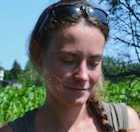 Paméla Lagrange (PhD 2011-2015) studied the drivers of survival and
dispersal in Tree Swallows using capture-recapture data (joint work with
Marc Bélisle at Sherbrooke). Pam is now working as a project manager at
Réserves Naturelles de France.
Paméla Lagrange (PhD 2011-2015) studied the drivers of survival and
dispersal in Tree Swallows using capture-recapture data (joint work with
Marc Bélisle at Sherbrooke). Pam is now working as a project manager at
Réserves Naturelles de France.
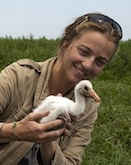 Tamar Lok (post-doc 2015-2017) developed population models to combine colour-banding,
tracking and count data to assess within- and between-individual
variation in different aspects of migratory behaviour of the Eurasian Spoonbill and
the Red Knot. Tamar is back to the Netherlands where
she is a researcher.
Tamar Lok (post-doc 2015-2017) developed population models to combine colour-banding,
tracking and count data to assess within- and between-individual
variation in different aspects of migratory behaviour of the Eurasian Spoonbill and
the Red Knot. Tamar is back to the Netherlands where
she is a researcher.
 Julien Papaïx (post-doc 2014) assessed the impact of global change on the population dynamics of Atlantic salmons (joint work with
Etienne Prévost). Julien is now a
permanent researcher at INRA.
Julien Papaïx (post-doc 2014) assessed the impact of global change on the population dynamics of Atlantic salmons (joint work with
Etienne Prévost). Julien is now a
permanent researcher at INRA.
 Fitsum Abadi (post-doc 2012) developed neat integrated population models. After a post-doc and occupying a lecturer position there, Fitsum is now
assistant professor in
the US, New Mexico State University.
Fitsum Abadi (post-doc 2012) developed neat integrated population models. After a post-doc and occupying a lecturer position there, Fitsum is now
assistant professor in
the US, New Mexico State University.
 Sabrina Servanty (post-doc 2008-2009) studied the dynamic of
exploited populations with wild boar as a case study. Sabrina then did a post-doc in the US, and a post-doc
in St-Pée/Nivelle on the Côte Basque.
Sabrina Servanty (post-doc 2008-2009) studied the dynamic of
exploited populations with wild boar as a case study. Sabrina then did a post-doc in the US, and a post-doc
in St-Pée/Nivelle on the Côte Basque.
 Elena Papadatou (post-doc 2009) worked at quantifying environmental
variation and its impact on population dynamics of bats. She worked as an environmental expert in Greece for some time, then moved to the UK to take a project manager position at
Arup.
Elena Papadatou (post-doc 2009) worked at quantifying environmental
variation and its impact on population dynamics of bats. She worked as an environmental expert in Greece for some time, then moved to the UK to take a project manager position at
Arup.
 Marlène Gamelon (PhD 2011-2013) studied environmental
variation and reproduction tactics in wild boars (joint work with Jean-Michel Gaillard and
Eric Baubet). She did a post-doc in Norway. Marlène is now a
permanent researcher at CNRS.
Marlène Gamelon (PhD 2011-2013) studied environmental
variation and reproduction tactics in wild boars (joint work with Jean-Michel Gaillard and
Eric Baubet). She did a post-doc in Norway. Marlène is now a
permanent researcher at CNRS.
 Lucile Marescot (PhD 2010-2012, post-doc 2017-2019) analyzed the
recolonization of wolves in France (joint work with Eric Marboutin and Guillaume Chapron). She did a post-doc in the US and another post-doc in Germany. Then she developed multi-species occupancy models for large mammals. This was a collaboration with Christophe Duchamp and Nolwenn Hoguet-Drouet from
ONCFS (France) and Arnaud Lyet from
WWF-US. After working as a freelance
data scientist in conservation biology, Lucile got a permanent position as a
researcher at CIRAD.
Lucile Marescot (PhD 2010-2012, post-doc 2017-2019) analyzed the
recolonization of wolves in France (joint work with Eric Marboutin and Guillaume Chapron). She did a post-doc in the US and another post-doc in Germany. Then she developed multi-species occupancy models for large mammals. This was a collaboration with Christophe Duchamp and Nolwenn Hoguet-Drouet from
ONCFS (France) and Arnaud Lyet from
WWF-US. After working as a freelance
data scientist in conservation biology, Lucile got a permanent position as a
researcher at CIRAD.
 Sarah Cubaynes (PhD 2009-2011, post-doc 2017) developed capture-recapture
mixed models (joint work with Christian Lavergne). After a post-doc both in the UK at Oxford and in the US working in the Yellowstone, she did another post-doc with us. Sarah is now
assistant professor.
Sarah Cubaynes (PhD 2009-2011, post-doc 2017) developed capture-recapture
mixed models (joint work with Christian Lavergne). After a post-doc both in the UK at Oxford and in the US working in the Yellowstone, she did another post-doc with us. Sarah is now
assistant professor.
 Mathieu Buoro (PhD 2010-2012) worked in evolutionary ecology using mark-recapture data in Atlantic salmons (joint work with Etienne
Prévost). Mathieu did a post-doc in the US at Berkeley, then came back as a post-doc in Toulouse. He is now a
permanent researcher at INRAE.
Mathieu Buoro (PhD 2010-2012) worked in evolutionary ecology using mark-recapture data in Atlantic salmons (joint work with Etienne
Prévost). Mathieu did a post-doc in the US at Berkeley, then came back as a post-doc in Toulouse. He is now a
permanent researcher at INRAE.
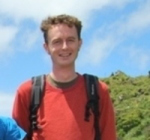 François Guilhaumon (PhD 2008-2010) analysed
biodiversity patterns at large scale and worked in conservation biogeography
(joint work with David Mouillot). François is now a
permanent researcher at IRD.
François Guilhaumon (PhD 2008-2010) analysed
biodiversity patterns at large scale and worked in conservation biogeography
(joint work with David Mouillot). François is now a
permanent researcher at IRD.